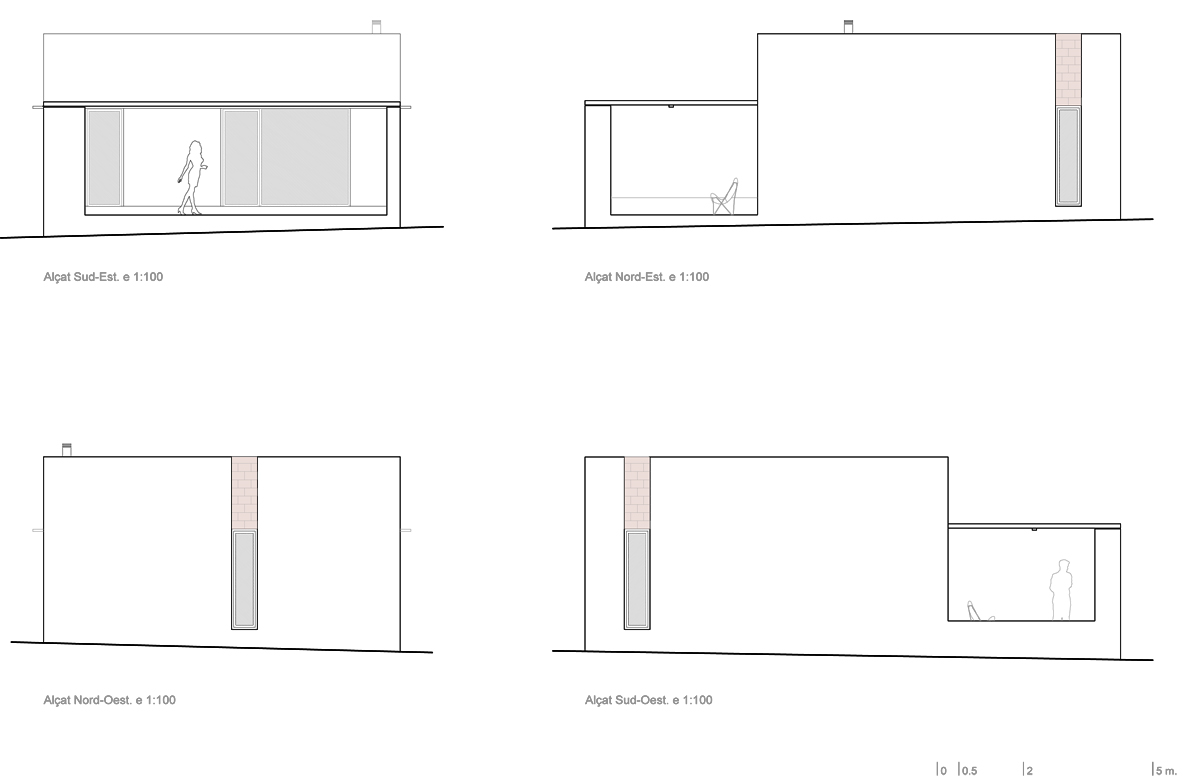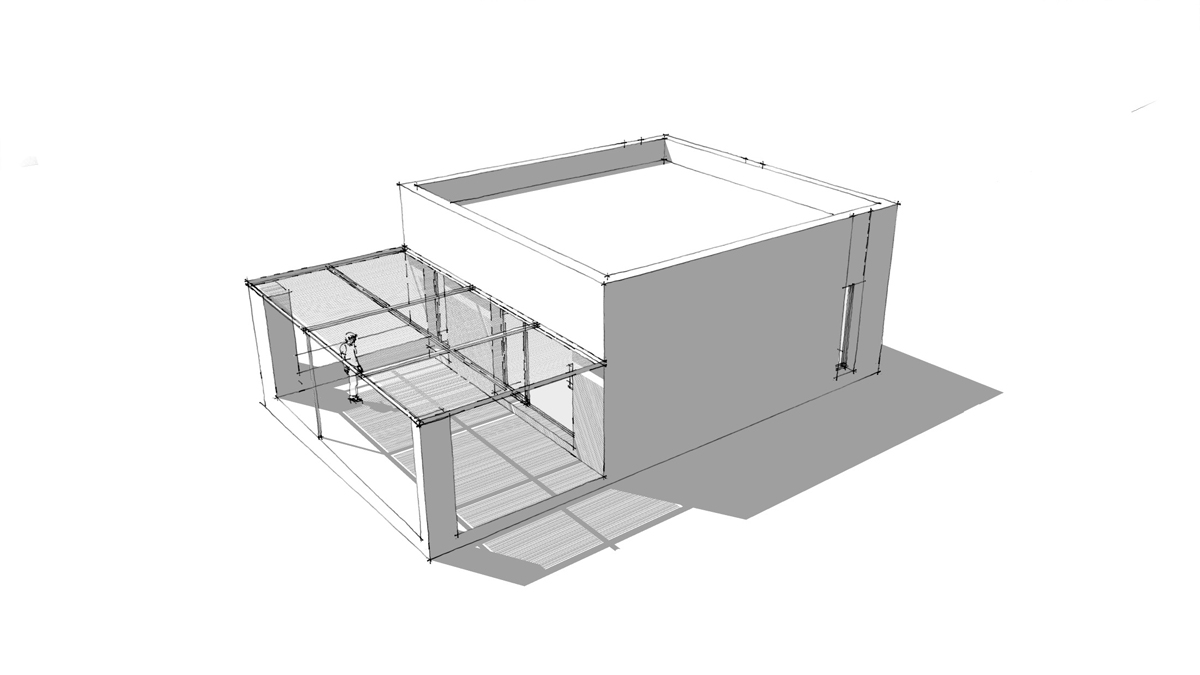Marià Castelló Can Xomeu
Fuente: Marià Castelló
Fotografía: Marià Castelló
Seleccionado FAD Arquitectura 2017
Can Xomeu Rita es una pequeña vivienda que toma el nombre de la finca tradicional del interior de la isla de Formentera donde se emplaza. Su ubicación en el territorio responde a un claro libre de vegetación cercano al campo de trigo y avena existente en la parcela, donde la alineación con las trazas de los muros de piedra seca existentes coincide con la buena orientación hacia el Sur así como con un área adecuada para recuperar el agua de lluvia en un aljibe.
La sencillez del programa se refleja en la planta mediante tres franjas que van desde la parte más pública orientada al Sur con el acceso y las mejores visuales desde el porche ligero, hasta la zona de noche en la parte norte donde los dormitorios se abren hacia levante y poniente. En la franja central queda un espacio diáfano de relación, cocina y comedor.
El diseño bioclimático de la vivienda se fundamenta en el hecho de aprovechar la ventilación cruzada en el interior para garantizar un ambiente fresco durante los meses de verano, gracias a haber analizado los vientos dominantes. Del mismo modo la profundidad del porche se ha dimensionado para que permita los aportes de radiación solar en el interior durante el invierno y, en cambio, genere sombra y frescor en la temporada estival.
El bajo presupuesto con que contaba la intervención se manifiesta también en la tectónica del edificio, que muestra sinceramente cómo ha sido construido. Termoarcilla, madera de pino, piedra caliza y morteros de cal permanecen vistos como acabados conformando soluciones constructivas transpirables que aportan más calidez, confort y salud al hogar.
***
Can Xomeu Rita is a small dwelling that takes the name of the traditional place name of the interior of the island of Formentera where it is located. Its location in the territory responds to a space free of vegetation close to the field of wheat and oats existing in the plot, where the alignment with the existing dry stone walls coincides with the good orientation towards the South as well as with an area adequate to recover the rain water in a cistern.
The simplicity of the program is reflected in the floor plan through three strips that go from the most public facing the South with the access and the best visuals from the light porch to the night area in the North where the bedrooms are towards East and West. In the central strip there is a diaphanous space of relationship, kitchen and dining room.
The bioclimatic design of the house is based on the fact of taking advantage of the cross ventilation in the interior to guarantee a cool environment during the summer months, thanks to having analyzed the prevailing winds. In the same way the depth of the porch has been dimensioned to allow the contributions of solar radiation in the interior during the winter and, instead, generate shade and freshness in the summer season.
The low budget of the intervention is also manifested in the tectonics of the building, which shows sincerely how it was built. Honeycomb clay block, pine wood, limestone and lime mortars are left seen as finishing forming breathable constructive solutions that bring more warmth, comfort and health to the home.
Emplazamiento / location:
Vénda des Molí de s’Estany. Formentera. SPAIN
Promotor / promoter:
Private
Arquitecto / Architect:
Marià Castelló Martínez
Arquitecto técnico / building engineer:
José Luís Velilla Lon
Estructura / structure:
Ferran Juan
Seguimiento arqueológico / archaeological monitoring:
Glenda Graziani Echávarri
Colaboradores / collaborators:
Marga Ferrer y Natàlia Castellà
Constructor / builder:
Motas Proyectos e Interiorismo S.L.
Proyecto / project:
2011-2015
Final de Obra / end of work:
2016
Superficie / surface:
69 m2 + terrace
Other projects by Marià Castelló







































